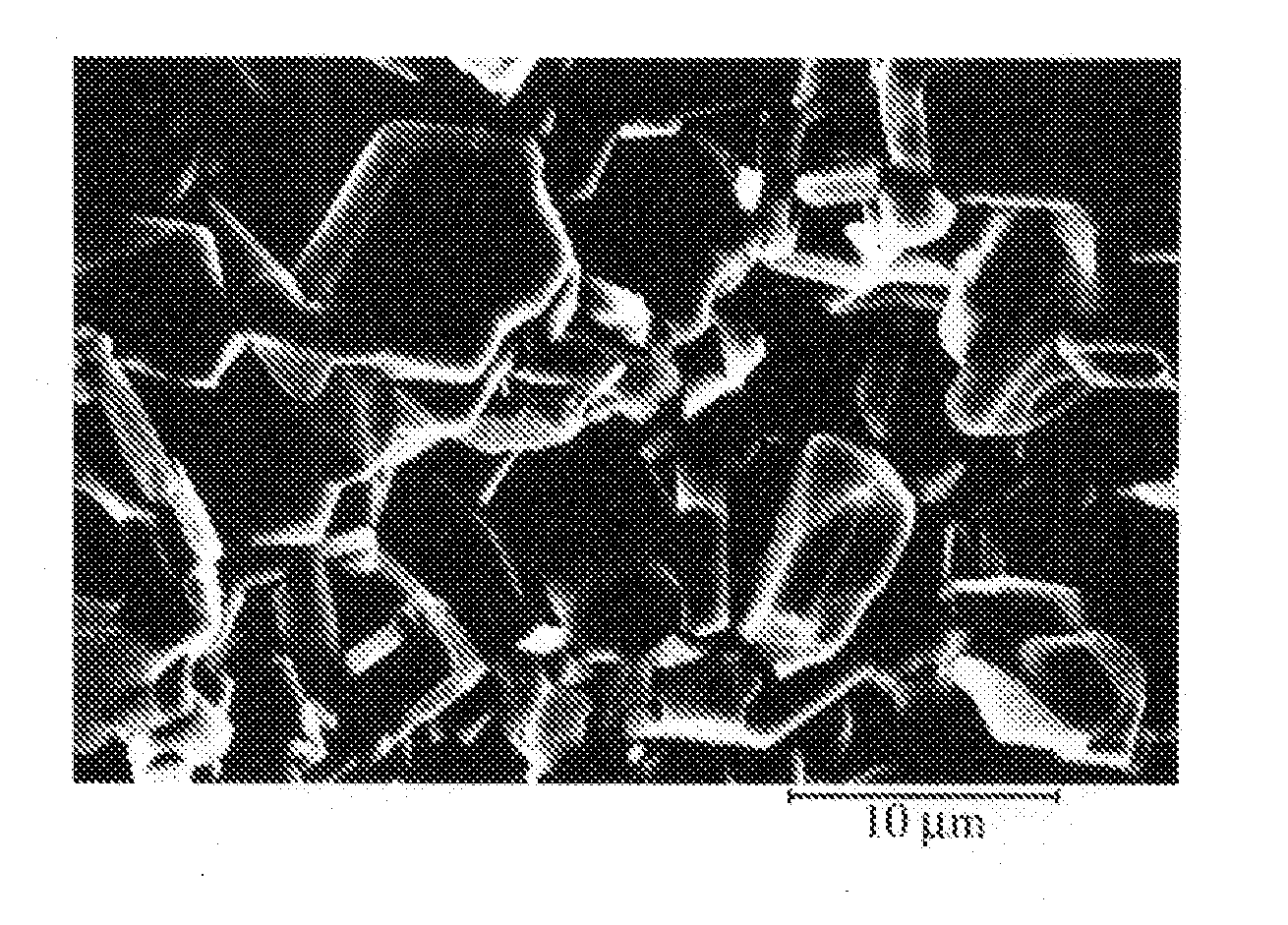Rotating machine, bonded magnet, magnet roll, and method for producing sintered ferrite magnet
a technology of ferrite magnets and bonded magnets, which is applied in the direction of magnetic bodies, magnetic filament recovery, and other directions, can solve the problems of reduced molding efficiency, high cost of sintered ferrite magnets, and long period of time, and achieves smaller higher br and hcj. , the effect of reducing the temperature dependence of hcj
- Summary
- Abstract
- Description
- Claims
- Application Information
AI Technical Summary
Benefits of technology
Problems solved by technology
Method used
Image
Examples
example 1
Conventional Example 1
Magnetic Properties of Radial-Two-Pole, Anisotropic, Sintered Ferrite Ring Magnet at Room Temperature
[0171]The experiment of Sample 2 in Japanese Patent 3181559 was traced. A composition of Ca1−x−yLaxBayFe2n−zCozO19, wherein x was 0.500, y was 0, z was 0.43, and n was 5.1, was mixed with 0.4% by mass of SiO2, and the resultant mixture was calcined at 1473 K for 3 hours in the air. After crushing and coarse pulverization of the calcined body, 100% by mass of the resultant coarse powder was mixed with 0.6% by mass of SiO2 and 1.0% by mass of CaCO3, and subjected to wet, fine pulverization in a ball mill with water as a medium to form slurry, in which fine powder having an average particle size of 0.9 μm was dispersed. Because the average particle size of fine powder in Sample 2 of Japanese Patent 3181559 is not described, it was assumed to be the same as 0.9 μm of the finely pulverized powder of Example 1.
[0172]This slurry was subsequently molded in a magnetic fi...
example 4
Recycling of Pluralities of Failed Green Bodies Having Different Compositions
[0198]Radial-two-pole, anisotropic, sintered ferrite ring magnets were produced in the same manner as in Example 1, except for using slurry of dispersed fine ferrite particles having an average particle size of 0.8 μm (F.S.S.S.) obtained by mixing the failed green bodies (M-type ferrite structure) generated in Example 1 with those generated in Example 2 at ratios shown in Table 5, and lightly and finely wet-pulverizing them. Measurement revealed that they had high magnetic properties at room temperature, and substantially as low β as in Example 1, as shown in Table 5.
[0199]Although two types of failed green bodies having different ferrite compositions were used in this Example, the type of the ferrite compositions used is not restrictive. Even when 3 or more types of failed green bodies are used, high-performance, anisotropic, sintered ferrite magnets can be produced.
TABLE 5Moldable Material (parts by mass)...
example 5
Recycling of Failed Sintered Bodies and Machining Dust
[0200]Coarse powder of the failed sintered bodies (M-type ferrite structure) generated in Example 1 was mixed with recycled, coarse, calcined powder (M-type ferrite structure) obtained by calcining the machining dust generated by grinding the sintered body of Example 2 under the same conditions as in Example 2, at ratios shown in Table 6. These coarse powders were finely wet-pulverized in the same manner as in Example 1 for an adjusted pulverization time to obtain molding slurries of dispersed fine ferrite particles having an average particle size of 0.75 μm (F.S.S.S.). These molding slurries were used to produce radial-two-pole, anisotropic, sintered ferrite ring magnets in the same manner as in Example 1, and their magnetic properties at room temperature and β were measured. As shown in Table 6, high magnetic properties at room temperature were obtained. Also, they had lower β than that of Example 2.
TABLE 6Moldable Material (pa...
PUM
| Property | Measurement | Unit |
|---|---|---|
| particle size | aaaaa | aaaaa |
| particle size | aaaaa | aaaaa |
| composition | aaaaa | aaaaa |
Abstract
Description
Claims
Application Information
 Login to View More
Login to View More - R&D
- Intellectual Property
- Life Sciences
- Materials
- Tech Scout
- Unparalleled Data Quality
- Higher Quality Content
- 60% Fewer Hallucinations
Browse by: Latest US Patents, China's latest patents, Technical Efficacy Thesaurus, Application Domain, Technology Topic, Popular Technical Reports.
© 2025 PatSnap. All rights reserved.Legal|Privacy policy|Modern Slavery Act Transparency Statement|Sitemap|About US| Contact US: help@patsnap.com



